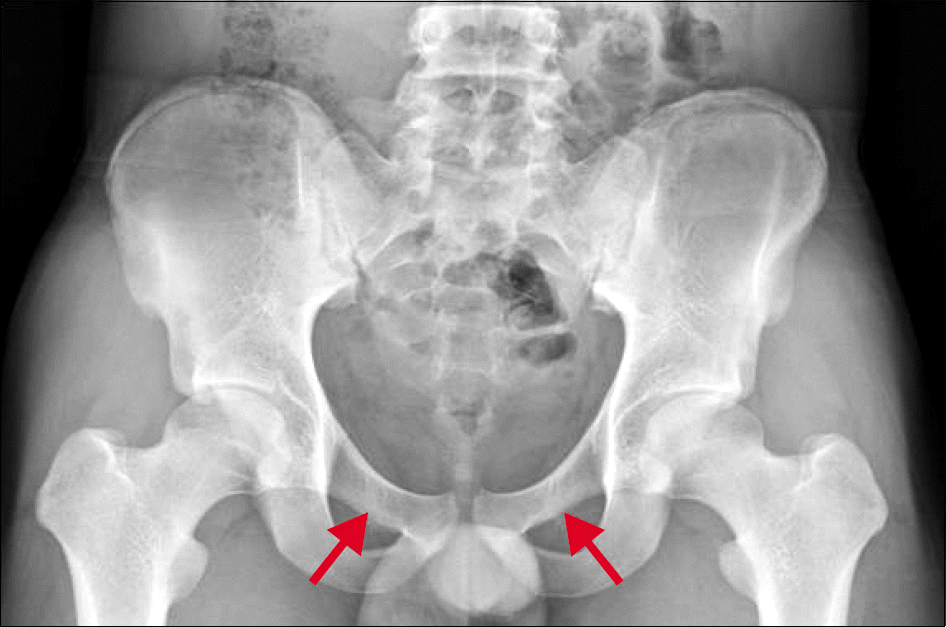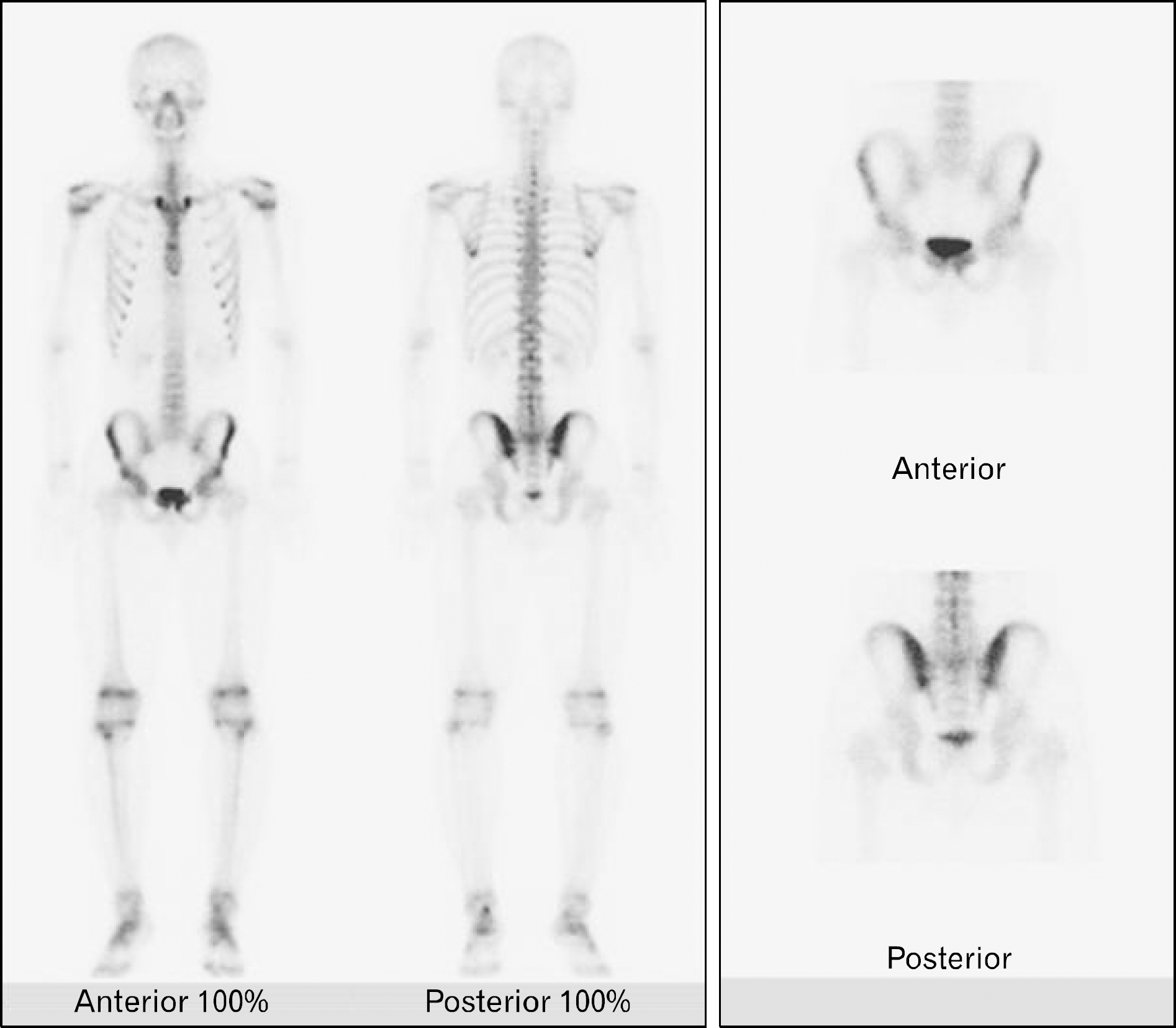Abstract
Stress fractures are common injuries that begin with repetitive and excessive stress on the bone. It is very rare that stress fracture was occurred in pubis superior ramus in athletics, and the report concerning the exercise therapy for this fracture was not sufficient in the literature. We report of a case of a 17-year-old male soccer player who suffered from left inguinal pain due to the stress fracture of pubis superior ramus. He was conducted an exercise program that consisted of muscle strength, stretching, aerobic and functional exercise for 2 months. After this intervention, all muscle strength was significantly improved (17%) compared to baseline data, and also flexibility and range of motion were improved. This case shows that exercise therapy considered the cause and cyclic formation of bone remodeling is benefit to improve the exercise performance for a soccer player with superior ramus stress fracture.
REFERENCES
1. Lee SW, Lee CH. Fatigue stress fractures of the pubic ramus in the army: imaging features with radiographic, scintigraphic and MR imaging findings. Korean J Radiol. 2005; 6:47–51.

2. Snyder RA, Koester MC, Dunn WR. Epidemiology of stress fractures. Clin Sports Med. 2006; 25:37–52.

3. Ekstrand J, Torstveit MK. Stress fractures in elite male football players. Scand J Med Sci Sports. 2012; 22:341–6.

4. Iwamoto J, Sato Y, Takeda T, Matsumoto H. Analysis of stress fractures in athletes based on our clinical experience. World J Orthop. 2011; 2:7–12.

5. Warden SJ, Burr DB, Brukner PD. Stress fractures: patho-physiology, epidemiology, and risk factors. Curr Osteoporos Rep. 2006; 4:103–9.

6. Brukner P, Khan K. Brukner & Khan's clinical sports medicine. 4th ed.New York: McGraw-Hill;2012.
7. Romani WA, Gieck JH, Perrin DH, Saliba EN, Kahler DM. Mechanisms and management of stress fractures in physically active persons. J Athl Train. 2002; 37:306–14.
8. Holmich P. Long-standing groin pain in sportspeople falls into three primary patterns, a "clinical entity" approach: a prospective study of 207 patients. Br J Sports Med. 2007; 41:247–52.
Fig. 1.
Radiograph on the pelvic. Showing stress fracture of the both superior pubic ramus (arrows).

Fig. 2.
The whole body images of the technetium99m bone scan. Increased radioactivity uptake showed at both superior pubis ramus. Especially, the left side appeared more clearly.

Table 1.
Peak torque values (Nm) of hip muscle strength after exercise therapy




 PDF
PDF ePub
ePub Citation
Citation Print
Print


 XML Download
XML Download